It’s hard not to get excited when Copenhagen Fashion Week rolls around. You can always expect playful yet down to earth designs. Not to mention, exquisite sets and countless hours of thought put into the shows.
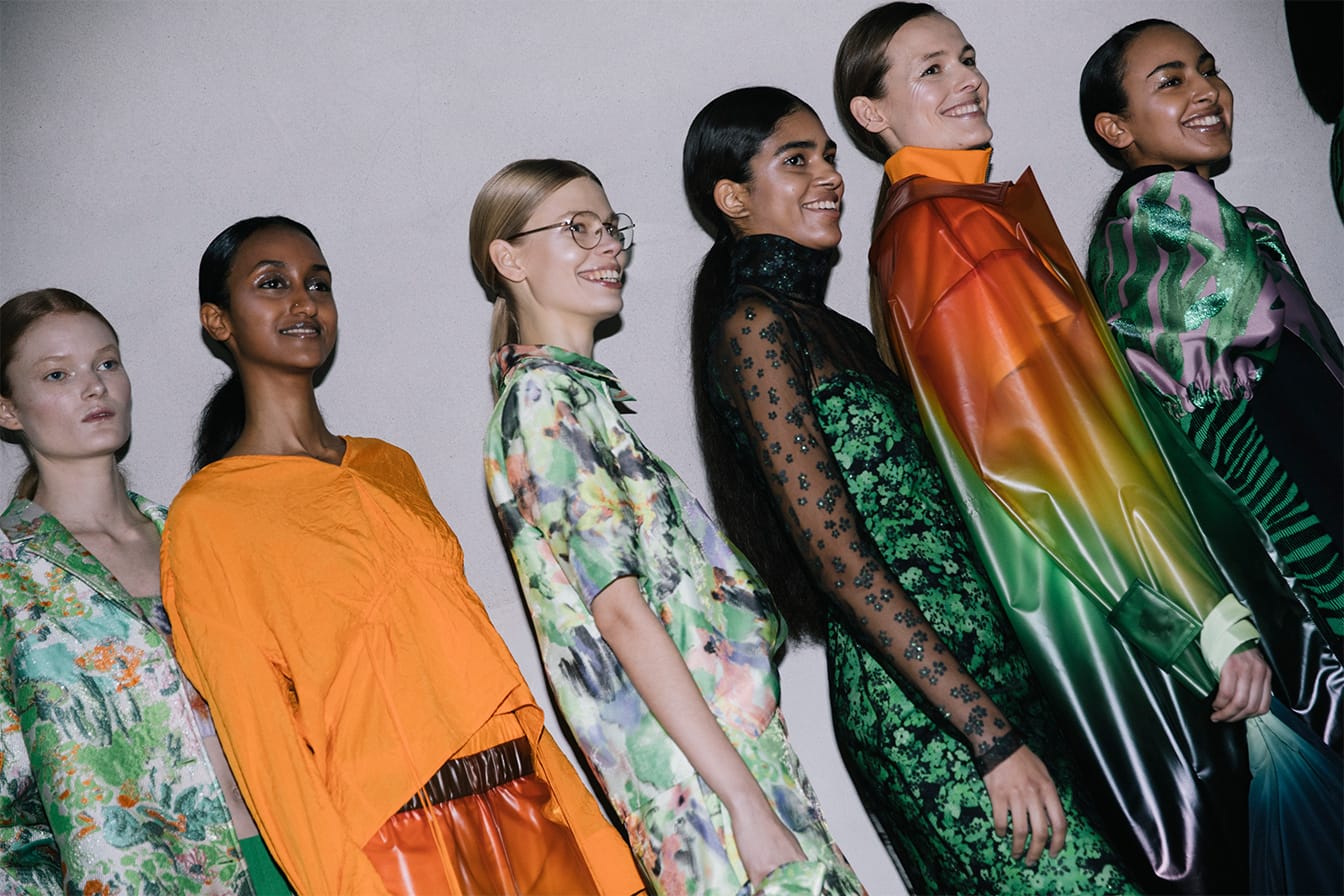
What truly distinguishes CPHFW from the rest of the fashion week pack is its commitment to sustainability. It’s not just talk; the organisers walk the walk. They’re not only reshaping how the event operates but are also on a mission to inspire and drive the industry towards a greener path.
At least fifty percent of the collections showcased are crafted from recycled or upcycled materials. That’s not just a small step; it’s a giant leap in the sustainable direction. And let’s not forget the spotlight on the runway for the Royal Danish Academy Master’s program participants. It’s not just about showcasing the graduates’ next-level fashion chops; it’s also about instilling a sustainable mindset in the future creators of the fashion world.
So, what’s in store for us at this year’s Copenhagen Fashion Week? Let’s take a look at some of the moments that have circulated my mind since the week ended.
Stine Goya
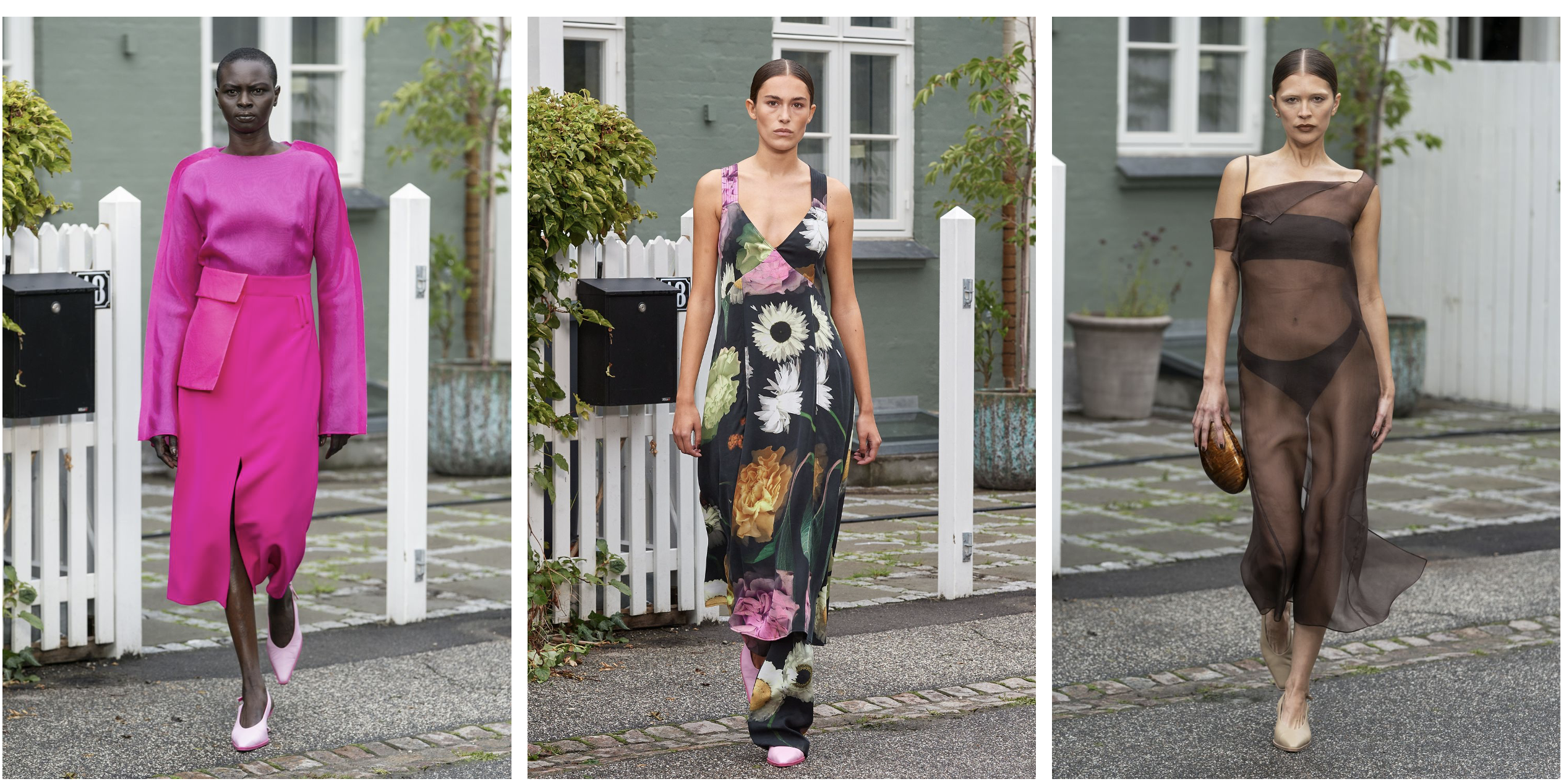
Of the many stand outs, I must say that Stine Goya was probably my favourite. Goya brought an intimate connection with this collection. Presenting her neighbourhood and the community that comes along with that.
In her collection named “Homecoming”, the communal street parties of Goya’s childhood are celebrated. Models emerge from different houses, walk the runway, and then take a seat at the long table that lines the runway. By the end of the show, all of the models were sitting together at the dinner table in their delicate floral print gowns.
The models matched the table which was adorned with roses, daises and orchids from Goyas local flower shop. Goya explains, “SS24 reflects the pursuit of home across cultures.” Notably, the sculptural-neck gown, midi-dress, and vibrant fucsia suit captured attention, showcasing meticulous detailing and bold design. The collection eloquently merged community spirit and personal roots.
Saks Potts
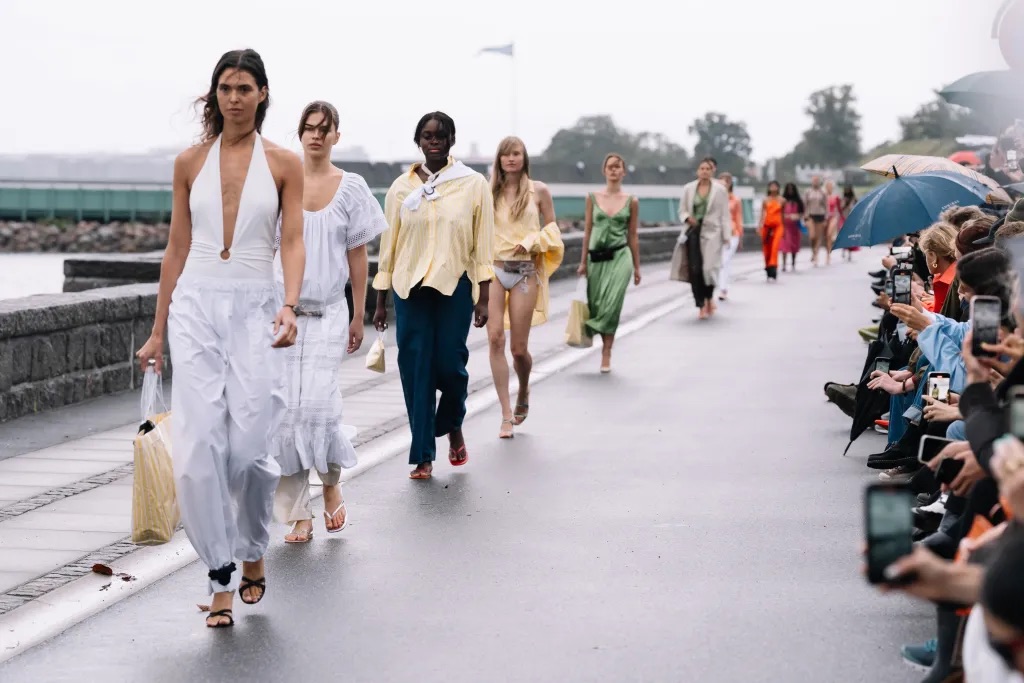
Taking a page from Prince’s playbook, who famously asked for heavier rain during his Super Bowl performance, the Danish duo behind Saks Potts embraced the downpour and staged an open-air runway by the sea.
Since its inception in 2014, the brand has garnered significant attention, and this collection was no exception. The lineup appeared to pay homage to the 2000s, featuring slip dresses, neck-tie scarfs, and belt bags. The unconventional setting and nostalgic vibe combined to make Saks Potts’ showcase a standout moment of the fashion week, showing that a little rain can’t dampen creative spirits.
Latimmier
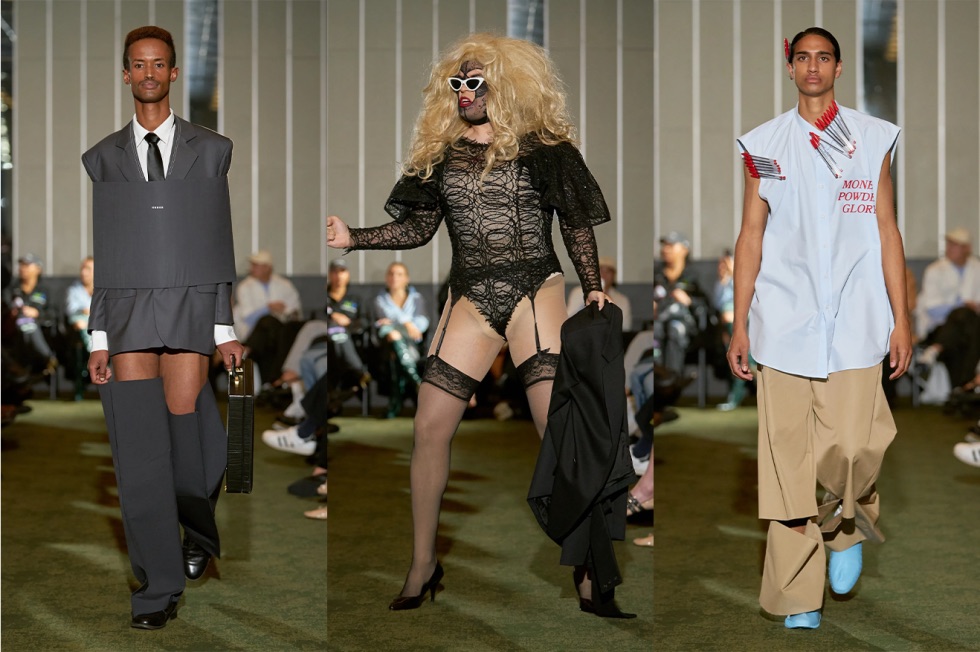
Latimmier brought an exploration of the drag queen alter ego onto the runway. The show delved into a commentary on the uniforms often associated with male power figures. Without a doubt, taking cues from pop culture references like The Wolf of Wall Street and American television.
Deconstructed suiting took centre stage, featuring models adorned with added bands of fabric and ties that appeared to symbolise societal constraints. This approach was complemented by the vibrant personality of the designer, Anna Conda, who adds her drag queen flair to the collection.
Ganni
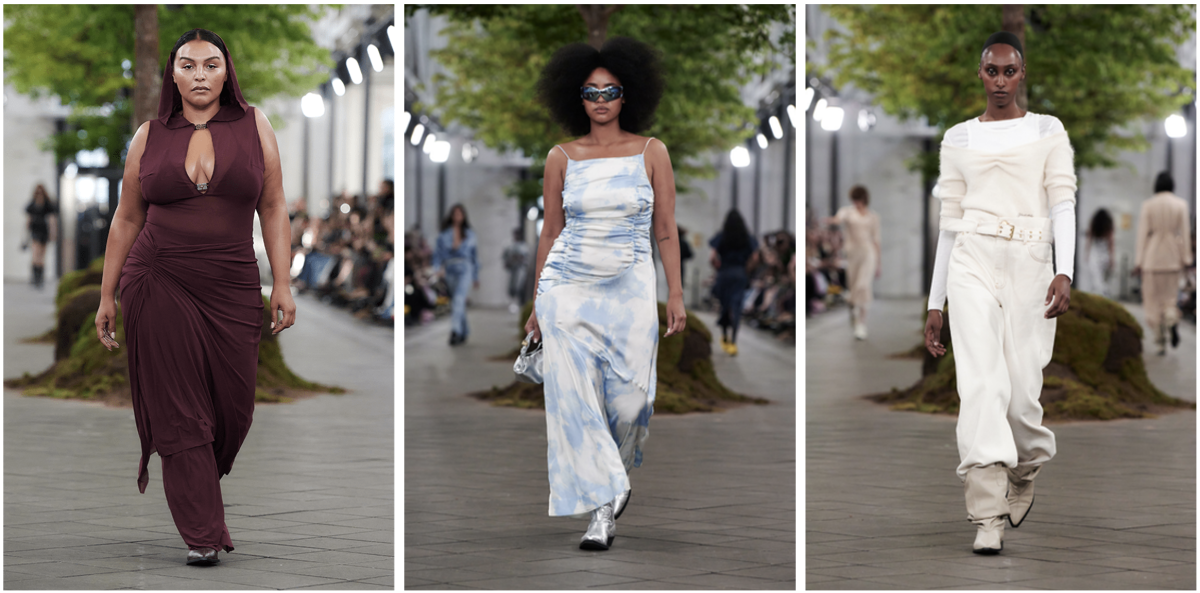
Ganni, wrapping up the season, made a statement at this Fashion Week exploring the impact of artificial intelligence. The integration of AI seeped through in forms of ChatGPT and “talking” trees along the runway in collaboration with AI artist Cecilie Waagner Falkenstrøm.
To end the show, supermodel Paloma Elsesser appeared in a sheer hooded ensemble, co-designed with Ganni’s creative director Ditte Reffstrup. The outfit, featuring ruched hips and a flared hem, echoed the techniques seen throughout the show, earning the title of “dress of the season” by the Ganni team.
Paolina Russo
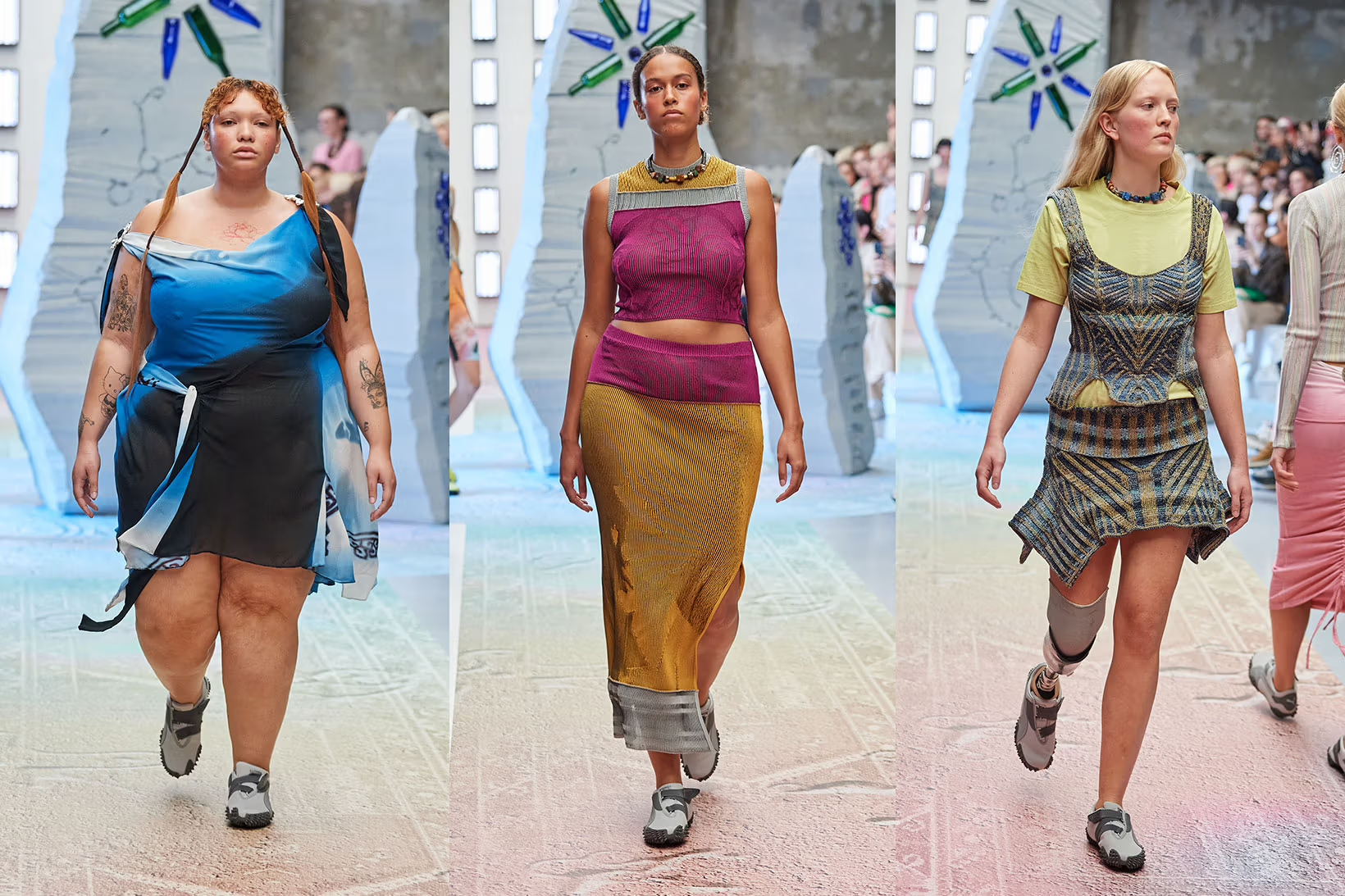
Making their debut this Fashion Week, emerging designers Paolina Russo and Lucile Guilmard. delivered a celebration of Y2K. With a Gen Z vibe, the collection showcased a skilful approach to layering that merged elements of folklore and futurism. Read more about her debut here.
Rotate
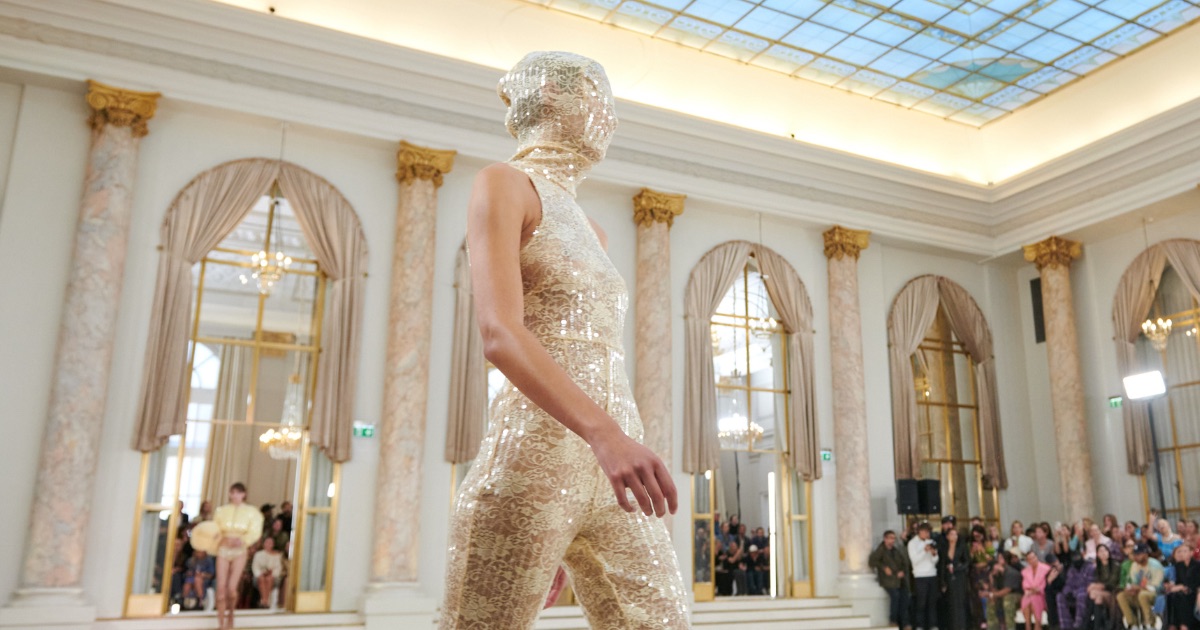
Founded by Jeanette Madsen and Thora Valdimars, Rotate introduced a distinctive blend of ornate elegance and punk rebelliousness. Drawing from the 90s and inspired by London-based designers who merged punk aesthetics with couture, the collection showcased a fusion.
Not to mention the vinyl black dresses, corset belts, sequin knickers and bodysuits, oversized hats, and ruffled gowns. Rotate’s runway resonated with a unique amalgamation of styles. The incorporation of these elements offered a glimpse into a creative exploration of the past with a modern twist.
Baum und Pferdgarten
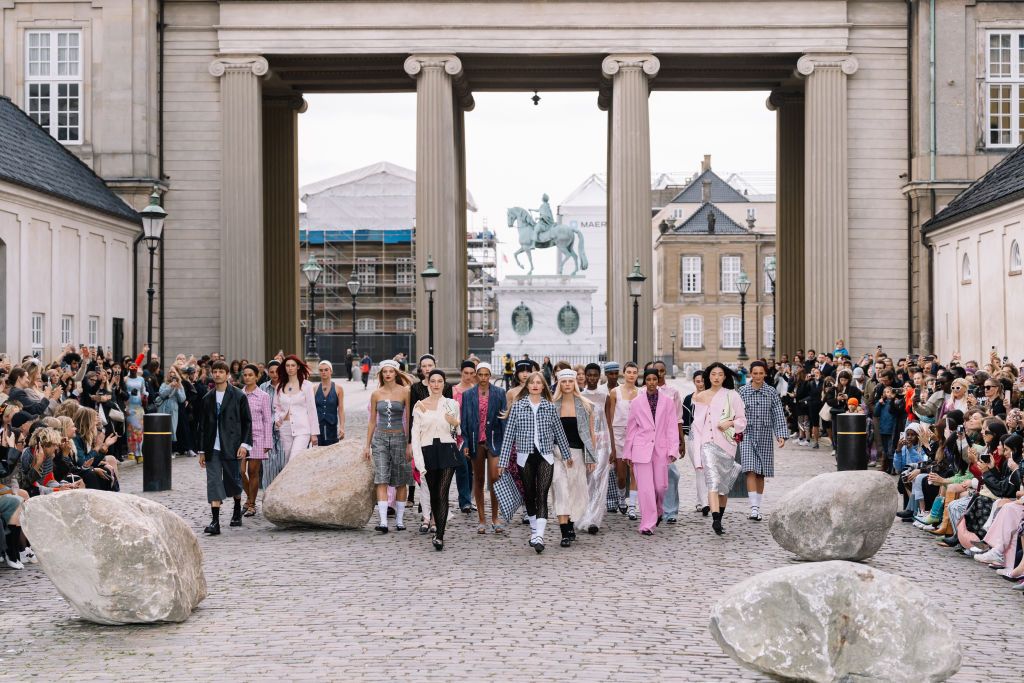
The pastel hues, gingham prints, tailored shirts, silly tights and cropped blouses of the collection welcome the girly Scandinavian vibe Baum and Pferdgarten embody. The collection was a love letter to Copenhagen, drawing inspiration from local landmarks, community, and vibrant graffiti.
Lovechild 1979
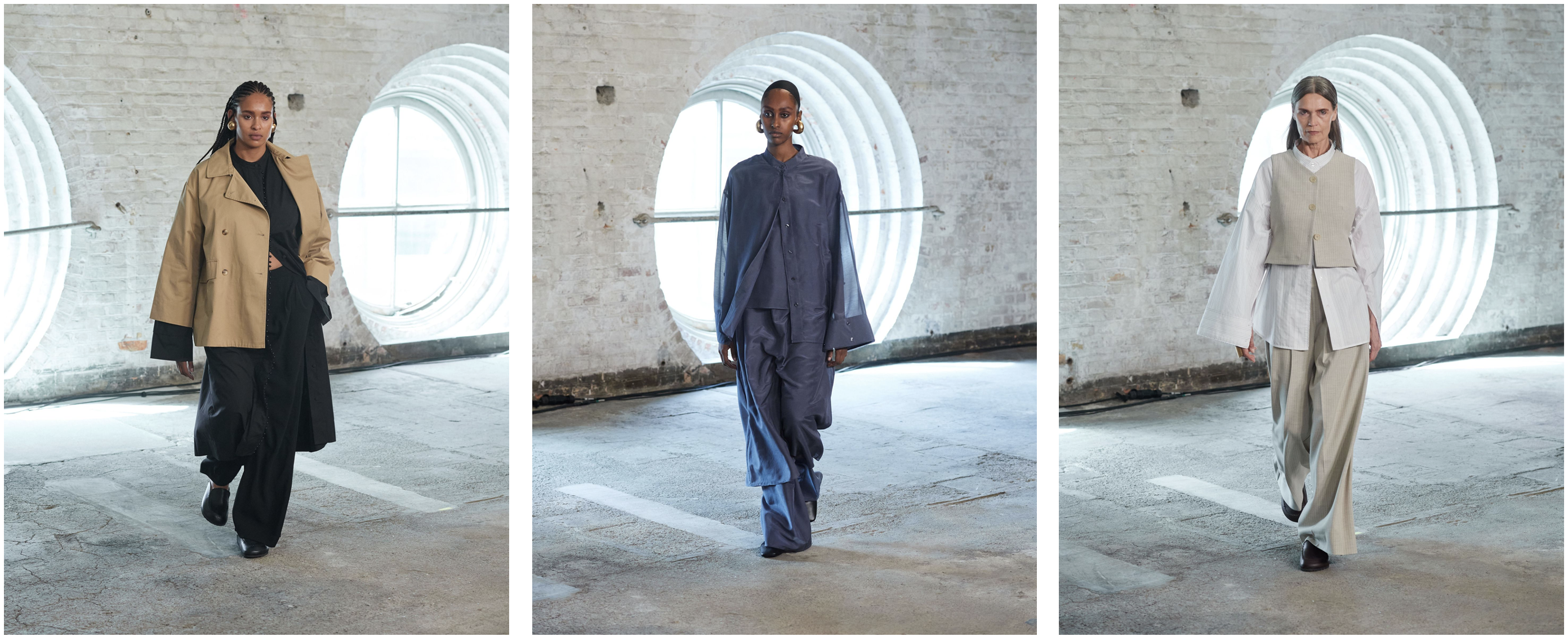
Lovechild 1979, drawing inspiration from Irving Penn, showcased effortlessly feminine designs set against the rooftops of central Copenhagen. The collection focused on oversized cuffed sleeves, delicate layering, and classic wardrobe pieces reinvented with a fresh twist. The brand partnered with a Danish/Peruvian female community, to introduce a soft alpaca yarn in a delicate, natural hue.
Some themes of the week
A common thread across many of the runway shows was the minimalist makeup and simple hair trends. Evidently, brands like Baum und Pferdgarten, Ganni, Lovechild 1979, Stine Goya, and TG Botanical embrace this aesthetic.
Skirts over trousers, a trend harking back to the 2000s, continued to make a statement on the runways of Copenhagen SS24. The layered silhouette extended its influence with wider and fluid trousers, embodying the Scandi girl’s comfort-first approach to fashion. Brands like Lovechild 1979 went for matching shades. However Ganni and Saks Potts used contrasting colour ways and fabrics to bring more intrigue to the style.
Likewise, sheer materials took centre stage across several brands, showcasing a diversification of this trend from gauze and silks to more experimental fabrics like sequins and tapestries. Sheer has been trending for a number of seasons now, so it’ll be interesting to see how much longer it sticks around for.
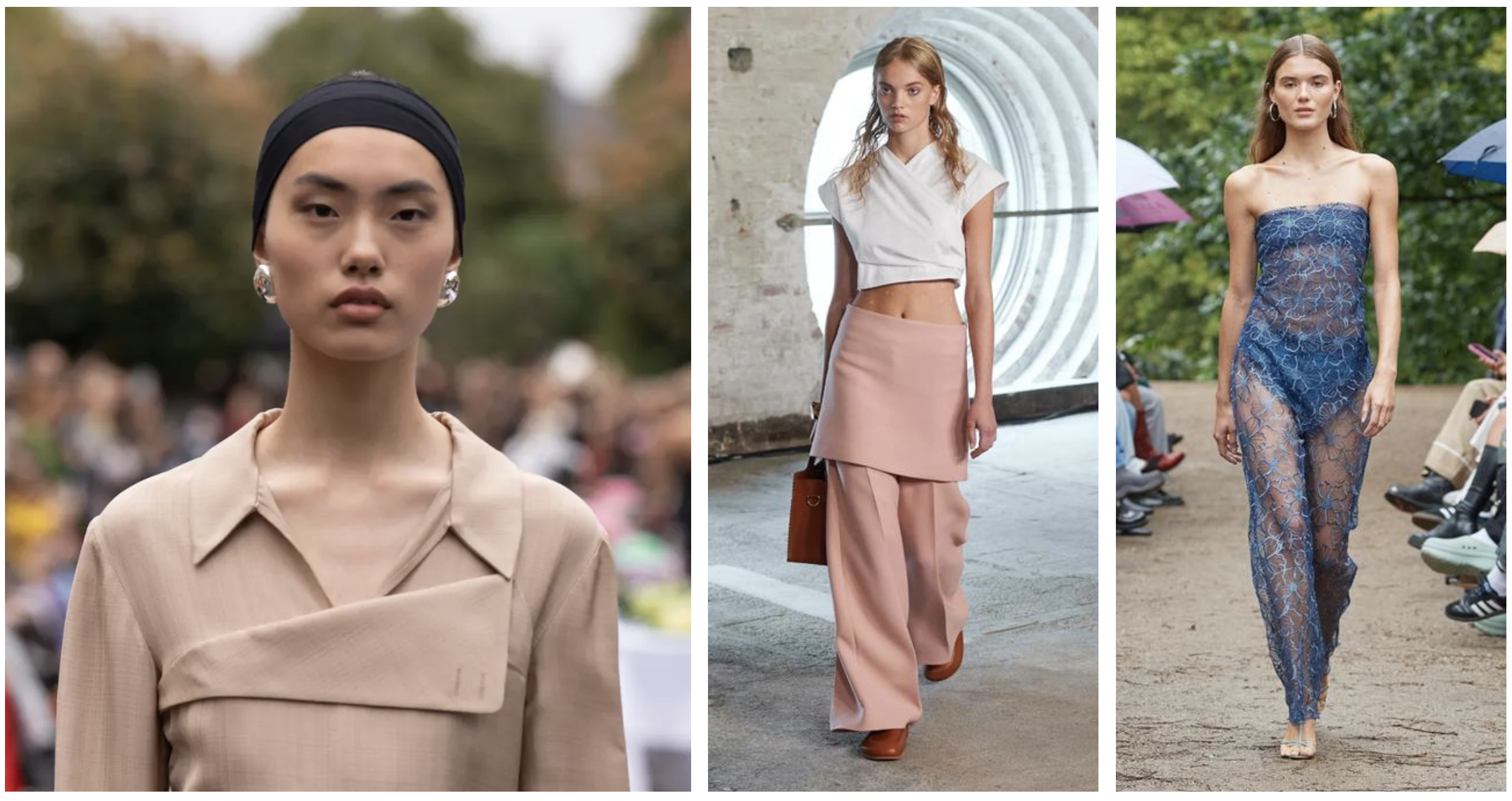
Find the full brand line up from the week here.
Subscribe to FIB’s Weekly Breaking News Report for your weekly dose of music, fashion and pop culture news!






